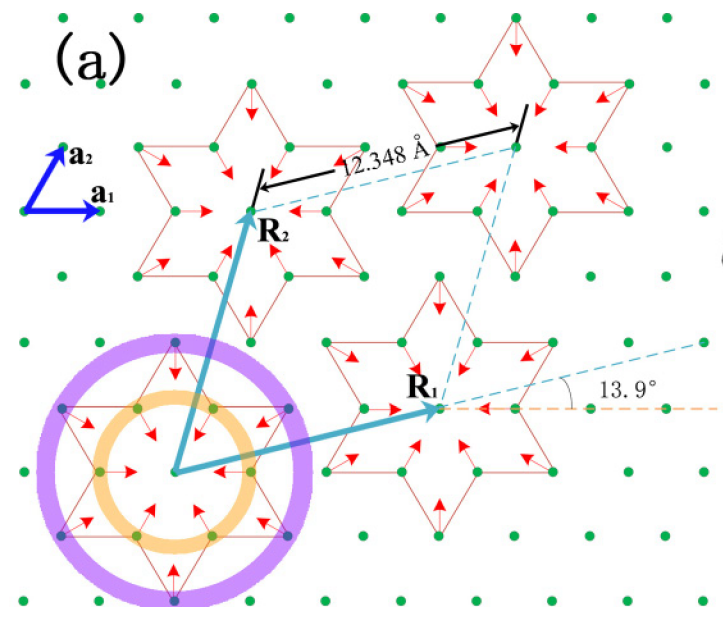
Electronic correlation and orbital-density wave (ODW) play important roles in the formation of the low-temperature phase, according to a study jointly conducted by ZOU Liangjian's research group in Lab for Computational Materials Sciences at Institute of Solid State Physics, Hefei Institutes of Physical Science and LIN Haiqing and CHANG Kai of Beijing Computational Science Research Center.
In their work, the joint team systematically studied the two-dimensional charge-density-wave (CDW) material 1T-TaS2, including bulk and monolayer systems, and high-temperature and low-temperature phases. And their finding was published in Physical Review B.
Experimental researches show that bulk 1T-TaS2 owns a rich variety of CDW phase transitions. It undergoes three CDW transitions as the temperature is lowered, including incommensurate CDW (ICCDW), nearly commensurate CDW (NCCDW) and commensurate CDW (CCDW) transitions.
Meanwhile, at the last phase transition the system is changed from a metal to an insulator. Although the material has been studied for more than 30 years, the low-temperature phase transition mechanism has not been confirmed so far.
To theoretically explore the low-temperature phase transition mechanism of 1T-TaS2, the team employed density-functional theory (DFT) and dynamical mean-field theory (DMFT) to systematically study the two-dimensional CDW material 1T-TaS2.
The relaxed CCDW structure obtained from DFT shows a star-of-David cluster where the first and second rings of Ta atoms contract inwards, as illustrated in Fig. 1.
Through DMFT calculations, the team further demonstrates that the structural distortion, together with the Coulomb interaction, stabilizes the CCDW insulating ground state.
In addition, through detailed analyses to the orbital characters near the Fermi level, they find that there exists an ODW order, which is predominantly contributed by Ta-5d3z2-r2 orbital in the central Ta of the star-of-David cluster. The contributions from the other four 5d orbitals are very small.
It is worth noting that the weight of the 5d3z2-r2 orbital decreases gradually from the center to the edge in each star-of-David unit cell, as plotted in Fig. 2.
Such an unusual behavior may origin from the structural distortion, which is characterized as an internal contraction of the 13-atom cluster. The charge density in the interval between two nearest-neighbor clusters is small as well as like a moat, leading to an in-plane insulating behavior.
Moreover, they also find that the ground state of the bulk 1T-TaS2 is an interlayer antiferromagnetic insulator and that the ground state of the monolayer 1T-TaS2 is a ferromagnetic insulator. These theoretical results provide useful information for studying orbital mechanism, exciton physics, flat-band characters and potential applications in the future.
This work is supported by the National Natural Science Foundation of China.

Fig. 1 The distortion mode in the Ta-atom layer. Red stars show the star-of-David cluster, and arrows illustrate the distortion directions of Ta atoms. (Image by YU Xianglong)

Fig. 2 Schematic diagram of the ODW order in the Ta layer. Each yellow star represents a cluster of thirteen Ta atoms. Red, green and blue orbitals correspond to the Ta-5d3z2-r2. The right panel (b) shows the character of one-dimensional metal along the c direction. (Image by YU Xianglong)

86-10-68597521 (day)
86-10-68597289 (night)

86-10-68511095 (day)
86-10-68512458 (night)

cas_en@cas.cn

52 Sanlihe Rd., Xicheng District,
Beijing, China (100864)

